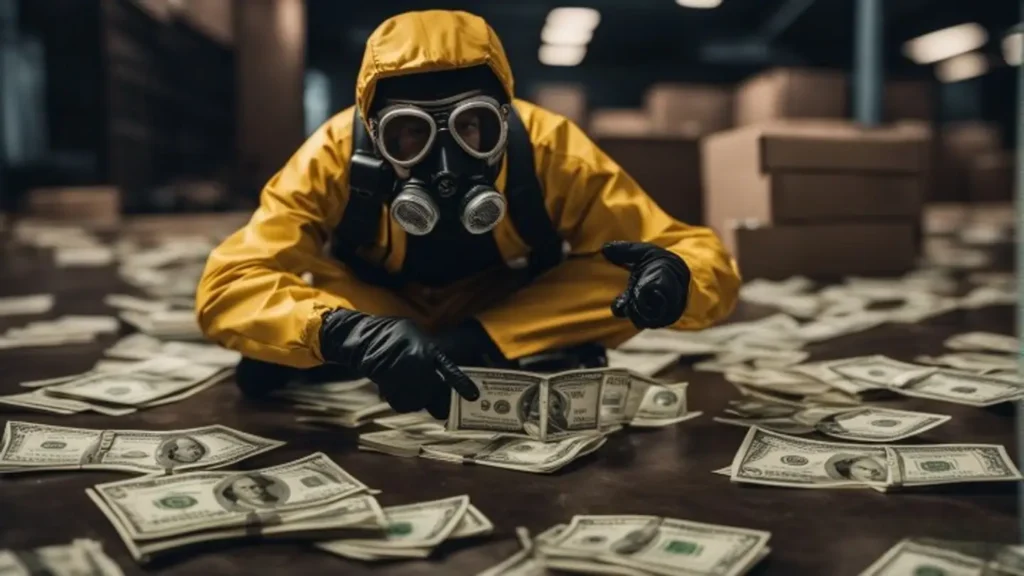Preparing for an exterminator visit can help save time, minimize costs, improve the likelihood of effective treatment, and make the job easier for the exterminator.
By doing it correctly, you can significantly advance the process before the pest control visit, making it more efficient and cost-effective for all involved. This article will tell you how to accomplish that.
How to Get Ready for Your Exterminator

Here are some general steps to prepare for an pest control visit:
- Note Pest Locations: Document all areas on your property where you’ve observed pests.
- Deep Clean Floors: Thoroughly clean your floors to eliminate debris or crumbs that could attract pests.
- Declutter: Remove any clutter that might serve as hiding spots for pests.
- Fix Water Leaks: Address any water leaks that could be attracting pests.
- Secure Food Storage: Safely store all food items in the refrigerator or cabinets.
- Cover and Seal Food: Cover and securely store all food items.
- Pet Safety: Ensure your pets are kept safely outside during the treatment process.
- Cover Infant Cribs: If you have fish or reptiles in tanks, cover infant cribs to protect them.
- Furniture Placement: Move furniture away from walls to allow access to all areas.
- Open Access: Open doorways, closets, and drawers to provide access to all areas.
Always try to follow the exterminator’s instructions and ask any questions you may have to ensure a successful pest control process.
What Happens during a Pest Control Visit
During a pest control treatment, a licensed technician will inspect your property to identify the type and extent of the infestation. Based on these findings, they will create a customized treatment plan.
This plan may involve various strategies, such as dust, gels, baits, aerosols, and liquid misting sprays, along with traps and other devices for pest removal.
The duration of the treatment varies depending on the property size and infestation severity. Throughout the process, the technician will apply treatments to affected areas, including cracks and crevices. They may also use a residual treatment that remains effective for several weeks.
After the treatment, the technician will provide maintenance instructions and advise on preventing future infestations. You might be asked to refrain from cleaning for a specified period to ensure treatment effectiveness.
Additionally, a follow-up visit may be scheduled to confirm the success of the treatment and address any remaining pest issues.

Switching gears for a moment, ever wondered whether tipping your exterminator is appropriate? Dive into our perspective on this topic.
Should You Clean before or after the Exterminator
It’s advisable to wait until the application is dry and the technician has provided the recommended cleaning timeframe.
The technician will instruct you on when it’s safe to clean your home, and it’s crucial to strictly follow those instructions to prevent interfering with the treatment.
Depending on the type of pests and treatment used, you may be able to perform light cleaning, such as wiping down counters or light sweeping, after a shorter initial waiting period.
However, it’s generally not recommended to clean immediately after pest control because the chemicals used are designed for pest elimination, and cleaning too soon can reduce their effectiveness.
Common Cleaning Products to Avoid
After a pest control treatment, it’s essential to be cautious about the cleaning products you use to avoid compromising the effectiveness of the treatment and potentially posing health risks.
Common cleaning products to steer clear of include bleach, ammonia-based cleaners, and peroxide-based cleaners, as they can interfere with the pest control chemicals.
Strongly scented cleaning products or air fresheners should also be avoided, as they can mask the odors that attract pests to bait traps.
Oil-based cleaners are best avoided since they can leave residues that may attract pests. It’s wise to stay away from products with harsh chemicals that could leave behind residues or negatively interact with the pest control treatments.
If you’ve hired a professional pest control service, it’s advisable not to use DIY pest control products simultaneously, as they might counteract each other.
Always follow the specific instructions provided by your pest control technician and inquire about any cleaning product restrictions or recommendations to ensure the treatment’s effectiveness.
Preparing for Pest Control Targeting Specific Pests
Bed Bugs:
- Take only essentials; leave most items in the home during treatment.
- Wash all clothing and washable fabrics in hot water and dry using high heat.
- Vacuum all cracks and crevices, and dispose of the vacuum bag in a sealed plastic bag.
Cockroaches:
- Thoroughly clean your home.
- Cover and store any food.
- Vacuum all areas.
- Whenever possible, move appliances away from the wall.
- Remove trash.
Termite Tenting:
- Discard, remove, or bag perishable food items during treatment.
- Remove plants.
- Open all interior doors.
- Make alternative sleeping arrangements, as you won’t be able to stay in your home during treatment.
Ant Control:
- Vacuum and clean your home.
- Remove any open food sources.
- Dispose of trash properly.
- Don’t leave pet food out.
- Rinse recyclables thoroughly.
Rodent Control:
- Cover and store all food.
- Inspect for holes and repair them.
- Eliminate places where rodents can shelter and build nests.
- Clean areas where food debris may accumulate (e.g., under the stove and refrigerator).
Flea Treatment:
- Wash pet bedding in hot water or, if possible, remove it from the home.
- Launder all home linens in hot water.
- Vacuum carpeted floors and furniture, and dispose of the vacuum bag afterward.
- Mop hard floors.
- Treat your pet for fleas simultaneously.
- Your yard will also need treatment, so remove all pet bedding and toys.

